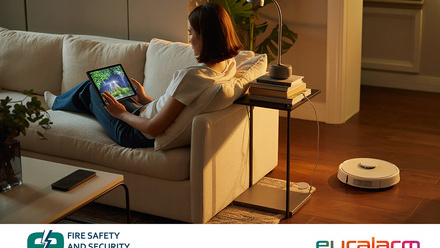Revision of EN 50130-4 impacting the fire and security industry
The EMC product family standard, EN 50130-4, for immunity requirements, applies to the components of (fire) alarm systems, intended for use in and around buildings in residential, commercial, light industrial and industrial environments. The EN 50130-4 is harmonized under the Electromagnetic Compatibility Directive 2004/108/EC (EMC). This Directive limits electromagnetic emissions of equipment to ensure that, when used as intended, such equipment does not disturb radio, telecommunication or other equipment. This is to avoid for instance that your laptop, that is working with high processor frequencies, disturbing your mobile phone lying next to it. The Directive also governs the immunity of such equipment to interference and seeks to ensure that this equipment is not disturbed by radio emissions when used as intended. So, by making your laptop sufficiently immune, it is protected from disturbances from, for instance, your mobile phone.
Harmonized under EMCD
As harmonized under the EMC Directive, the EN 50130-4 is necessary for obtaining the CE mark. Normally a certificate is issued after the testing has been successfully completed. This certificate is important as it provides access to the European market. The EN 50131 standard (intruder alarms and hold-up systems) and the EN 54 series of standards (fire detection and fire alarm systems) refer to the EN 50130-4 standard. To prove that a component is compliant to the relevant EN 50131 or EN 54 standards the EN 50130-4 tests are also applicable. In addition to CE marking, EN 50130-4 also plays an important role in some product standards. These standards require that the products concerned comply with the EN 50130-4 and therefore are sufficiently robust for the environment where they are applied.
Consequences of revision
Changes to harmonized standards such as EN 50130-4 should come from the EU commission. However, the current revision was initiated by CENELEC TC79 WG09, that is maintaining the standard. The reason for this initiative is with the rapid emergence of new technology, such as the mobile 5G network and the increasing number of hotspots, the higher frequency bands reserved for these technologies (upto 6 GHz) may affect immunity and radiation of products.
The implication of this for manufacturers is that they will have to go back to the laboratories and make additional tests due to the change in the standard. The tests are quite involved and require for instance an anechoic chamber and take at least 1 or 2 days of testing. In the worst case the tested products need to be modified and all related paperwork to be updated. In addition to the extra costs for testing this will also cause a considerable delay in the time to market.
Ensure integrity
If TC79 decides not to revise the standard this could mean that both fire and security products may result in immunity or radiation problems in the future. The likeliness of these problems is not so obvious regarding the alarm functionality since alarm systems are already quite robust to short radio disturbance. However, to ensure the integrity of our products Euralarm has started an assessment of products to determine whether there are any problems to be expected and if so, to what extent these problems will occur. This not only takes into account new products, which are expected to pass the tests but also for products at the lower frequency which could possible fail more than those at the higher-level frequency.
Timeline
It is expected that a published EN 50130-4 will not be cited in the Official Journal of the European Union (OJEU) in the foreseeable future. Most probably it will take 3 more years before it is cited. This situation will lead to more uncertainties with unnecessary effort and burden for the industry. Once cited there will be a transition period of two years before the revised EN 50130-4 will come into force. One problem that already exists is the fact that the EN 54 standards reference different versions of EN 50130-4. This inconsistency leads to double EMC testing of fire detection and fire alarm components in order to comply with the EMC Directive and the CPR. A modification of the affected standards is presently hindered due to the EU Commission's influence on how harmonized standards are written so they can be published in the OJEU.
More information on the revision of the EN 50130-4 and especially the position paper on TC79 WG9 and the EN50130-4 standard can be found on the Euralarm website. The position paper can be downloaded here by Euralarm members.






